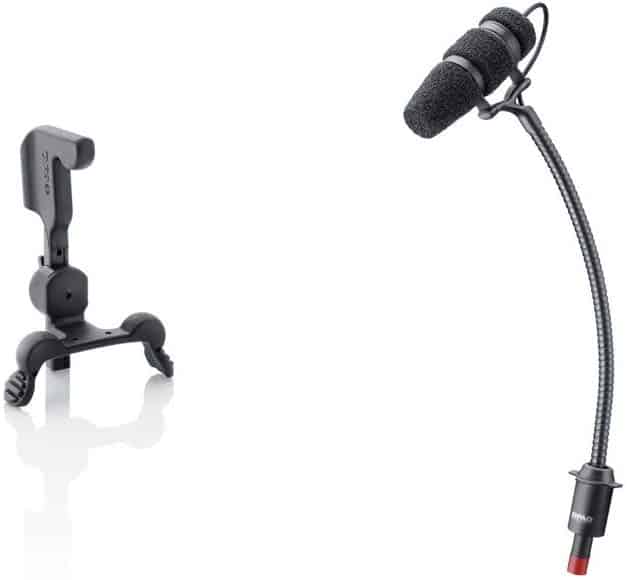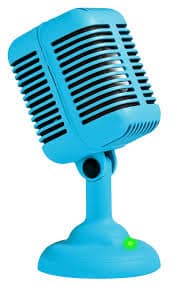Like all small instruments such as a Ukelele or Mandolin, Microphone placement is a little harder to accomplish to get a full timbre of quality sound. What are some best-known Mic Placements for a Mandolin?
Use a Cardioid Condenser Mic:
4 inches off the body of the Mandolin just above the soundhole.
8 inches off the Mandolin’s neck joint or Use a Large Cardioid
Condenser Mic.
Aimed 10 in. off the Mandolin
For lower end-slide, the mic farther up the neck & point the mic back At an angle towards the body
How To Mic a Mandolin Live and Recording
The modern Mandolin evolved in the 18th century in Italy and Germany. The mandolin has four pairs of steel strings tuned, by a machine head just as on a guitar, to violin pitch (g–d′–a′–e″) the pegs are at the back of the pegbox.
The pear-shaped body is deeply vaulted; the fingerboard, with 17 frets, is slightly raised. The strings are hitched to the instrument’s end. The belly of the instrument is angled down increasing pressure on the strings.
The popular mandolin played in American Bluegrass string bands is a shallow, flat-backed version of the instrument. Its been widely played by musicians like the Carter Family for years since the 1920s.
Because of the instrument’s size and shape, microphone placement and position is a difficult thing to accomplish. If not done right the Mandolin can sound cheap, thin, and like a toy. Too close, will affect gain and picking noise that can come from the player. Too far a placement will affect the isolation part that can pick up everyone and everything surrounding you.
Small Diaphram Microphones are perfect for small instruments like the Mandolin that can capture a tighter picture pinpointing the sound where they are coming from the sweet spot of the instrument.
On stage, you need to do that without a bleed to other instruments and players on stage during the show.
A mic’s proximity to the Mandolin can make a world of difference keeping out the busy sounds of a Bluegrass band while picking up the wide frequencies that the small stringed instrument has to offer. The mic has to be close enough but far enough not to interfere with the player’s hands. For Brightness aim the mic a little further down the neck.
The First Position– is to use a Small Diaphragm Cardioid Condenser Microphone and aim the mic at the neck joint about 8 inches away.
The Second Position- is to switch the Small Diaphragm mic with a Large Cardioiode Condenser Mic. Aim the mic just above the neck joint at about 10 inches away.
The Third position– is to point a Small Cardioid Condenser about 4 inches off the body of the Mandolin just above the soundhole. Anytime depending on the Mandolin, you are lacking that body and low end moving it towards the Soundhole will accentuate that bass end frequency and make it sound fuller.
It can make the small Mandolin sound bolder and bigger. This would work better with a less expensive Mandolin that may lack lower frequency. Kind of the opposite of what you do miking an acoustic guitar where you would want to stay away from the boomy result of the Soundhole.
A good way of compensating for this lack of low end is to slide the mic a little farther up from the mic joint and point the mic back at an angle towards the body.
The new Clip-On mic can have an absolutely great effect on Close Miking on stage. The player is free to move along with the exceptional unlimited ways of Mic Techniques. Omni Directional Miniature mics that can fit any instrument.
Miniature omnis like the d:screet™ IMK4061 Instrument Mic Kit offers a wide variety of placement possibilities and many live situations will benefit from close-miking with a DPA Miniature Microphone, especially if the monitor level is not too high.

Or a Miniature Cardioid Mic that is better for a live stage play. Offering lots of gain before feedback while retaining the clear and transparent DPA signature sound, the d:vote™ 4099 instrument Microphones are the perfect choice for all live applications. This is a very light setup with no weight or fumbling with the mounting clip it’s strong and dependable.
When selecting a microphone for close-miking, make sure that the microphone matches the SPL of the instrument. Is it a loud or soft sound source? Be aware that loud peaks or transients can easily reach 20 dB (10 times!) above the average level. The holders will allow for a fixed dependable position in the best location without moving.
Mandolin Microphone
I hear a lot of this and concur that no matter the instrument, or the direction of flow nailing a Mandolin sound on stage or n the Studio is the same as an Acoustic Guitar. Player- Instrument- Mic- room- Pre & interface and clearly the most important is the player. There are certain qualities of a mic that work well with any instrument.
Neumann U 89 I Studio Microphone Black Color In addition to the usual directional polar patterns: omnidirectional, cardioid, and figure-8, it has added a hypercardioid and wide-angle cardioid characteristic. When compared to the standard cardioid pattern, the hypercardioid characteristic suppresses sound from the side more efficiently.
Making it a good choice for recording live play in the studio for Bluegrass isolating some bleed from other players. The wide-angle polar pattern is especially useful to record large sound sources. Acoustic features and a great reputation from pro studios if you got the bucks. Look to record and point the capsule from the popular Newmann logo.
Rode NT55 Multi-Pattern Instrument Condenser Microphone My favorite for acoustic stringed instruments. The Rode NT55 builds on the success of the NT5 sometime called the Pencil Mic, providing an excellent mic for performing any type of recording application. The NT55 utilizes the 1/2″ externally biased gold sputtered true condenser transducer used in the NT5.
The NT55 is a state-of-the-art low noise balanced output microphone, exhibiting a wide dynamic range and full frequency response. The NT55 comes with 2 different condenser microphone heads to provide a variety of polar patterns. The NT55 is complemented with a diverse range of accessories to better facilitate positioning. With a nice price tag and for multi-use in your home studio.
Audio-Technica ATM450 Cardioid Condenser Instrument Microphone An even better priced Cardioid Condenser Mic. The mic is equipped with an integral 80 Hz hi-pass filter providing an easy switching from a flat frequency response to a low-end roll-off.
The mic has a switchable 10 dB pad that lowers the microphone’s sensitivity, providing higher SPL capability for flexible use with a wide range of performers and system configurations. The ATM 450’s extended flat frequency response makes it ideal for high SPLs as well as for living and amplified acoustic instruments.
Includes a professional isolation clamp to provide secure mounting, versatile positioning, and effective dampening of unwanted mechanical noise. Always start at the neck joint to get the response that you’re looking for and experiment with this video on mic positioning and placement it’s excellent.
Best Mic Placement For Recording a Lap Steel Guitar
Mandolin Miking Tips
- Your first EQ starts with the room but controls the amount of lower mid-range you’re getting when recording by moving the Mandolin closer and farther from the microphone.
- Keep the player’s hand from coming between the capsule and the mandolin
- Try and keep the mic away around 10 inches off the instrument.
- Experiment with a placement that’s dependent on the player-the room and the instrument. Keep a starting point and work off that.
- Add Brightness by moving the mic position up the neck
- Add bottom end and full richness by using the Placement that moves the mic up the neck and points the capsule back towards the body of the Mandolin.
How To Mic an Upright Bass
JimGalloway Author/Editor

MikingDesign.com


